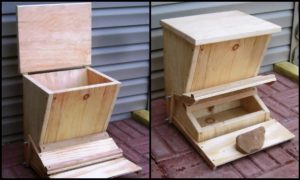Last Updated on April 24, 2024 by teamobn
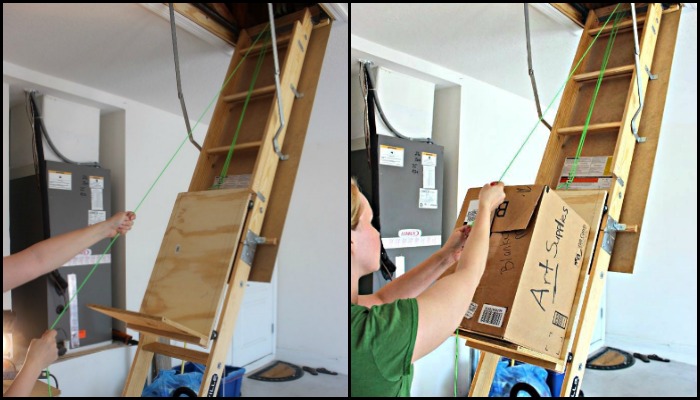
An attic is a space in a house that is typically located above the main living area. Attics can be difficult to access and often have limited headroom, making them challenging to use for anything other than storage.
Attic storage is difficult to access. And if you’re one of those people who always struggle to store items in the attic, here’s a clever attic storage lift system that might just be what you need! By using a few simple tips, you can organize your attic storage so that it’s easy to access and use. This system, called the “attic storage lift,” is a great way to organize your attic and keep your belongings safe.
By using a series of pulleys and a winch, you can easily raise and lower heavy items into and out of your attic space. This attic storage lift system solution is for those who have limited space in their attic or for those who want to keep their belongings safe from damage.

Your attic is perfect for stashing away seasonal items like Christmas trees and holiday decor, or for keeping things you don’t use often but aren’t ready to toss. However, the main challenge with attic storage is accessibility, especially when lugging heavy boxes up those narrow stairs. It can be tough to retrieve what you need without a hassle.
If you’re gearing up for some serious attic decluttering, consider avoiding the strain of moving heavy items on your own. A simple pulley system can be a game-changer, making it easier and safer to hoist those bulky boxes. These systems are affordable and can significantly ease the burden of attic organization.
This DIY attic storage lift project is designed for homes with pull-down attic ladders and straight side rails. It’s an ideal solution for making your attic more reachable, and you can put it together in just a few hours.
Keep in mind, every attic is unique, so you’ll need to adjust the measurements and possibly the materials and hardware to suit your specific space. It’s crucial to take accurate measurements and plan accordingly before you start.
For those curious about the specific materials we’re using, all the details are outlined below. The provided tutorial is an excellent resource to guide you through creating your own attic storage assistant.
Tired of the struggle with attic boxes? This DIY attic storage lift is a great help, especially for the elderly or those living alone. It simplifies storing and accessing items in your attic, making it a task you’ll no longer dread!
Do you know someone who needs this one, too?
Contents
Building an Attic Storage Lift System
Materials
- 2’x2′ 3/4″ Plywood
- 4′ of 1×2 Hardwood
- Wheels
- Skateboard Bearings
- 2+ Pulleys (your choice; the more you have the easier the load will be)
- 5/16″ Washers
- 5/16-24 Nut 4 count
- 5/16-24 x 1-1/2 Bolt
- 50ft Paracord/Rope
Tools
- Measuring Tape
- Saw/Jigsaw
- Wood Clamps
- Nail Gun
- Socket Wrench
- Drill
- Speed Square
Instructions
Step 1: Design and Measurements
- Begin by measuring your attic and the hatch or opening through which items will be moved. This ensures the lift platform and frame fit well within the available space.
- Use the speed square and measuring tape to mark out a 2’x2’ square on your plywood, which will serve as the base of the lift.
Step 2: Cutting and Assembling the Frame
- Use the saw or jigsaw to cut the plywood along the marked lines.
- Cut the 1×2 hardwood into four pieces to use as the frame around the plywood base. This frame will help reinforce the base and provide a structure to attach the pulleys and ropes.
- Clamp the hardwood around the perimeter of the plywood and secure them using the nail gun.
Step 3: Installing the Pulleys and Wheels
- Decide on the number of pulleys you will use. More pulleys can distribute the weight more evenly and make lifting easier.
- Attach the pulleys to the frame of the lift at evenly spaced intervals using the drill and bolts. Ensure they are firmly attached and can rotate freely.
- Attach wheels to the bottom of the plywood base using bolts and bearings. This will allow the lift platform to move smoothly across the attic floor.
Step 4: Setting Up the Lifting Mechanism
- Thread the paracord through the pulleys. Make sure the rope is long enough to comfortably reach from the attic to the floor below, allowing easy operation.
- Attach one end of the rope to a secure point on the attic floor or wall as an anchor.
- Tie the other end of the rope to the lift platform, ensuring it is securely fastened and evenly balanced.
Step 5: Installing the Lift
- Carefully place the lift system into your attic through the hatch or opening.
- Test the lift by gently pulling on the rope to raise and lower the platform. Adjust the pulleys and rope as needed to ensure smooth operation.
Step 6: Safety Checks and Adjustments
- Before using the lift to transport items, perform a safety check. Ensure all bolts are tightened with the socket wrench and that the lift moves smoothly without any obstruction.
- Load a few light items onto the platform and test the lift to make sure it can handle the weight without any issues.
Step 7: Final Setup
- Organize your items on the lift platform. Heavier items should be placed at the bottom, while lighter items can be stacked on top.
- Use the lift to store and retrieve items from your attic as needed.
Click on any image to start the lightbox display. Use your Esc key to close the lightbox. ![]()
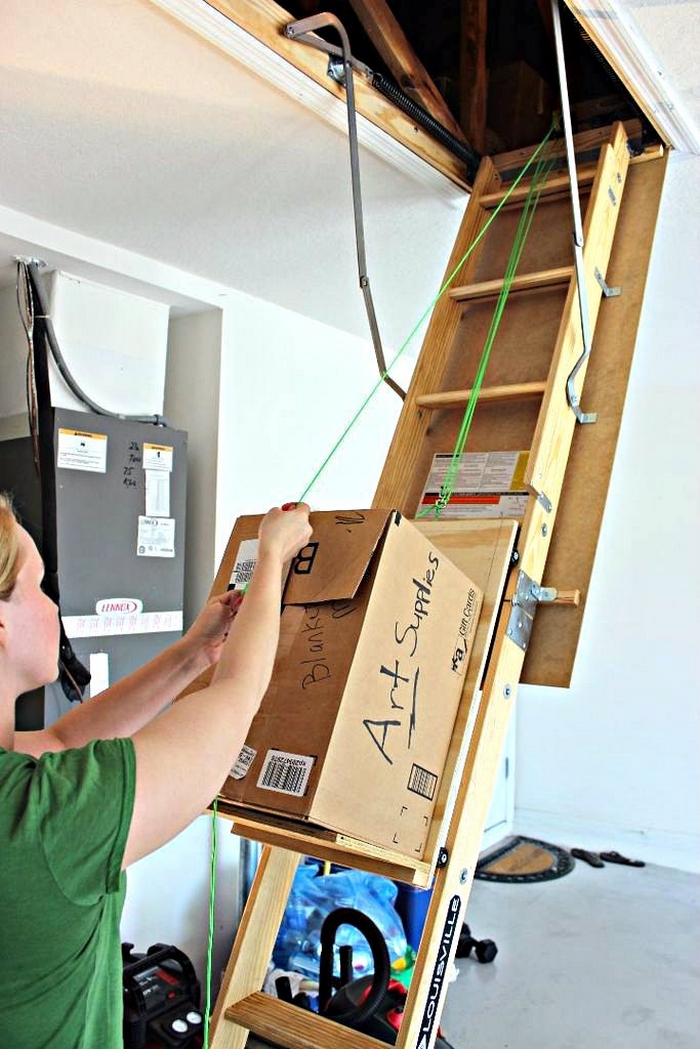

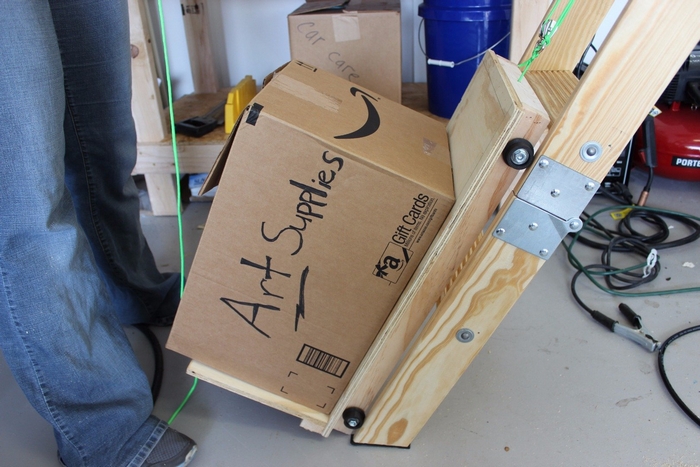
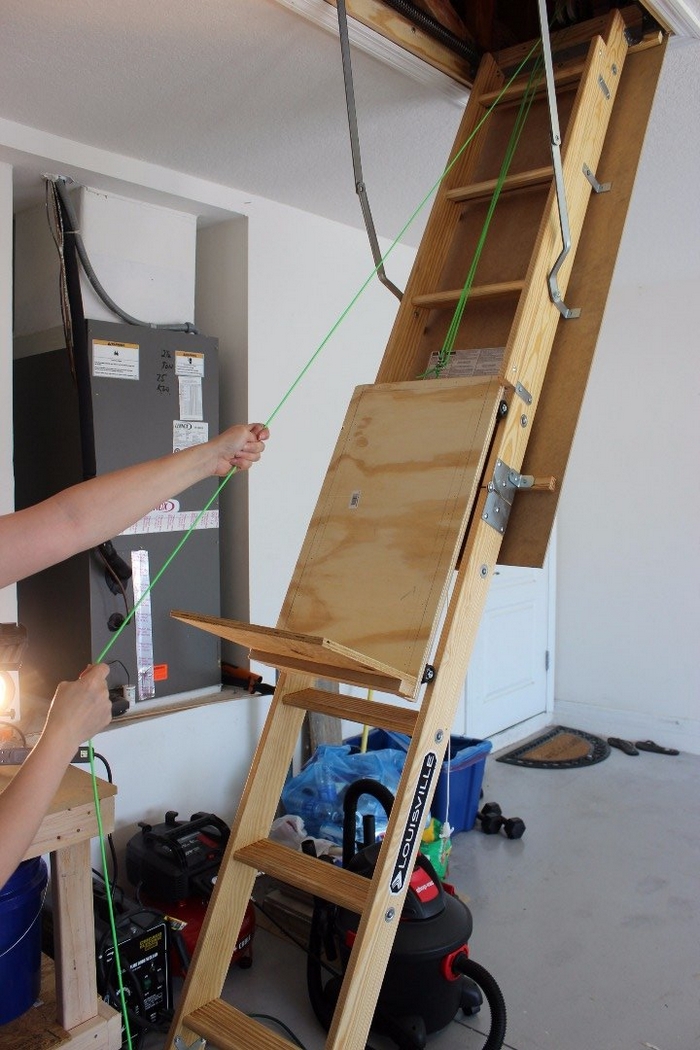
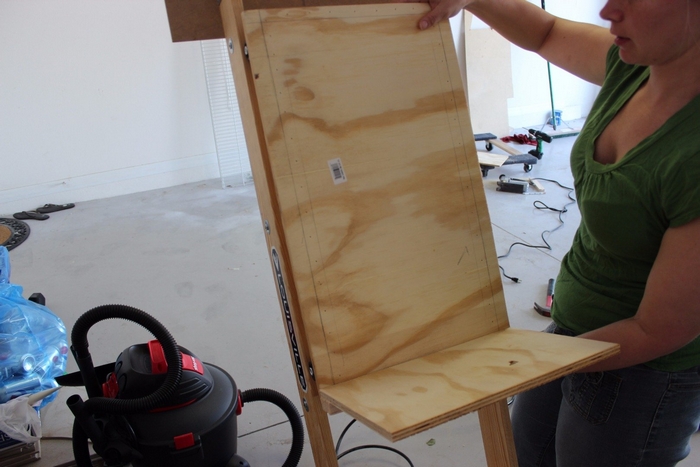
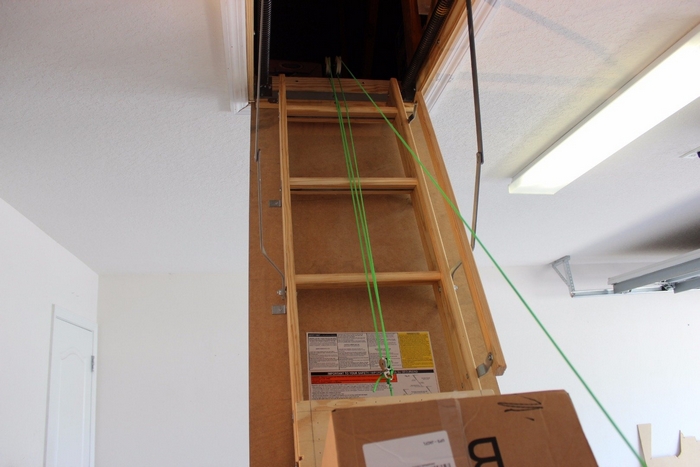
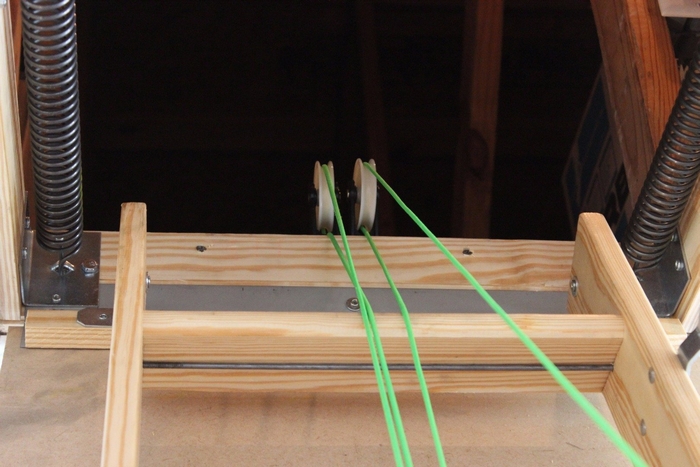

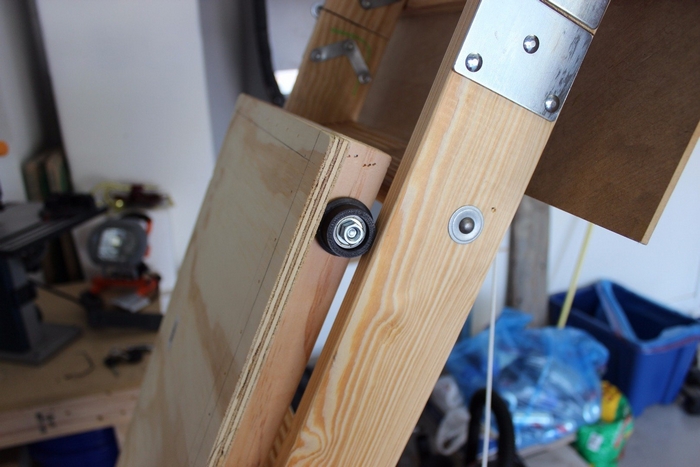
Safety Tips for Installing and Using an Attic Storage Lift System
Installing and using an attic storage lift system can significantly ease the burden of moving items to and from your attic. However, it is crucial to prioritize safety to prevent accidents and ensure the system functions effectively.
Here are several safety tips to consider throughout the installation and use of your attic storage lift system.
Check the Structure’s Integrity:
Before setting up your attic storage lift system, inspect the attic’s floor and framing. Ensure that the structure can support the additional weight of the lift system and the items you plan to store. If necessary, reinforce the attic floor or framing.
Understand the Instructions:
Thoroughly read and understand all manufacturer’s instructions or DIY guidelines. If you are unclear about any steps or specifications, seek advice or consider hiring a professional to assist with the installation.
Use Appropriate Tools and Materials:
Always use the tools and materials recommended in the installation guide. Substituting materials or using improper tools can compromise the safety and functionality of your attic storage lift system.
Secure Installation:
Ensure all components of the lift system, such as pulleys, bolts, and the lifting platform, are securely installed. Double-check all connections and fastenings before the first use.
Work with Assistance:
Installing an attic storage lift system can be complex and physically demanding. Have at least one helper to manage heavy parts and maintain balance, reducing the risk of injury.
Load Testing:
Before using the attic storage lift system to transport actual storage items, conduct a load test with a weight similar to the heaviest items you plan to lift. This test helps ensure the system can handle the load safely.
Regular Maintenance:
Regularly inspect the attic storage lift system for any signs of wear or damage, such as frayed ropes, loose bolts, or malfunctioning pulleys. Promptly replace or repair damaged components.
Operate with Caution:
When using your attic storage lift system, never exceed the maximum weight limit specified by the system’s design. Overloading the lift can lead to mechanical failure.
Keep Clear of the Load:
Always keep clear of the area directly underneath the lift system while it is in operation. Never allow children or pets near the lift during use to avoid accidents.
Controlled Operation:
Operate the attic storage lift system slowly and steadily. Avoid abrupt actions that could destabilize the load or cause the system to malfunction.
Emergency Preparedness
In case of a mechanical failure, know how to manually override or safely unload the system. Keep necessary tools handy and ensure all household members know how to operate the system in an emergency.
By adhering to these safety tips, you can safely install and use your attic storage lift system, making attic storage convenient and secure. Always prioritize safety to protect yourself and your belongings.

Legal and Building Code Considerations for Installing an Attic Storage Lift System
Installing an attic storage lift system involves more than just technical know-how; you also need to navigate through several legal and building code requirements. These regulations vary by location, so it’s crucial to ensure your project complies with local laws to avoid any legal hassles.
Here’s a breakdown of the main points you should consider.
Check Local Building Codes
Building codes can significantly influence your attic storage lift system’s installation, especially regarding structural and electrical modifications. Reach out to your local building department to understand the specific rules and guidelines in your area.
You might need a permit to install your attic lift. This process typically requires you to submit your project plans and undergo inspections during and after installation, ensuring everything meets local standards.
Insurance Considerations
Let your insurance provider know about your attic lift. It’s important to check if this installation will change your policy or require additional coverage, safeguarding you against potential damages or accidents linked to the lift.
Adhere to Safety Standards
It’s vital to comply with recognized safety standards, such as those from the American National Standards Institute (ANSI) or other international bodies. These guidelines help ensure your lift is safe and reliable.
Accessibility
If the lift is in a commercial space or a rental, you need to consider accessibility laws like the Americans with Disabilities Act (ADA) in the U.S., which may dictate specific accessibility features for the lift.
Environmental Impact
Some local laws may govern the environmental impact of your construction. For instance, the electrical aspects of your attic lift need to meet certain energy efficiency standards.
Keep Good Records
Keep all your paperwork in order, including permits, inspection reports, and contractor communications. These records are vital for maintaining legal compliance and could be essential if you sell your home.
Hiring Professionals
Make sure any contractors you hire to install your attic lift are fully licensed and qualified. This ensures your installation is up to code and reduces the risk of legal complications.
Understanding and following these guidelines will help you smoothly navigate the legal landscape while installing your attic storage lift system. Staying informed and cautious not only ensures compliance but also contributes to the safety and effectiveness of your project.
Conclusion
Installing an attic storage lift system can significantly enhance the accessibility and functionality of your home’s storage space. It’s important to follow all local building codes and safety standards. Following this guide will make your attic a functional and efficient storage area.
We have more ways to maximize your home’s space. Check out our front porch project next!




